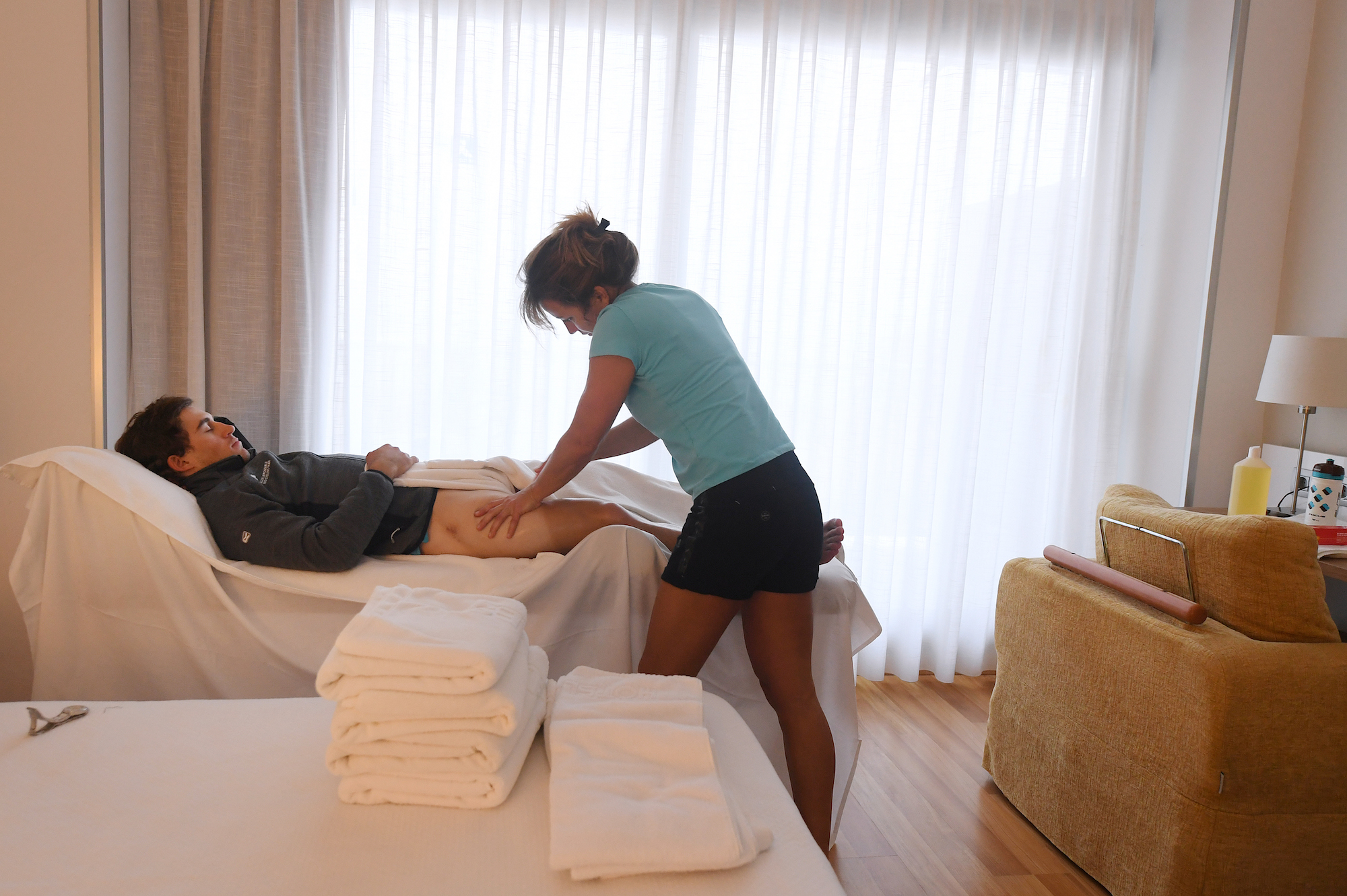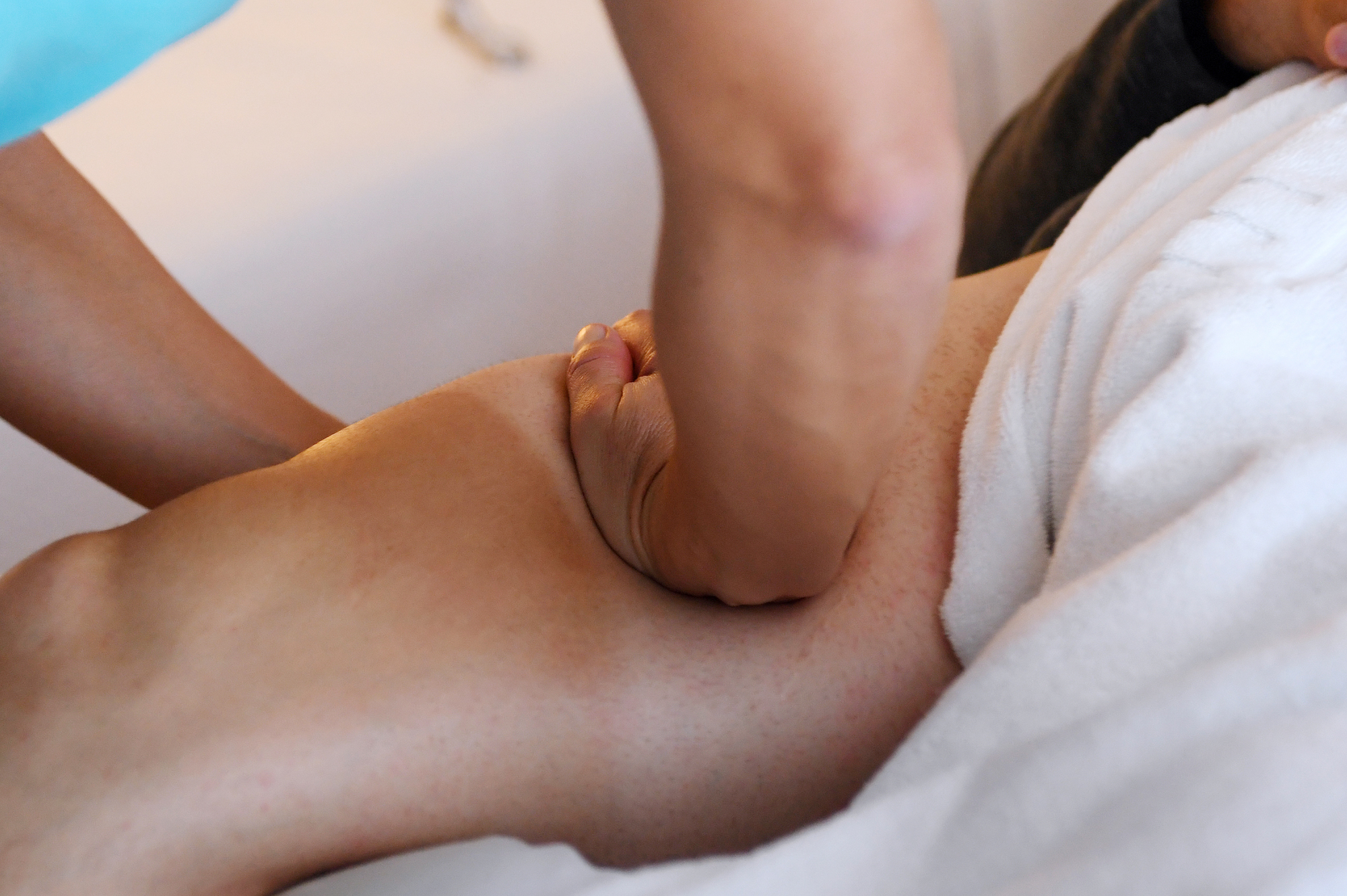Do cyclists really need massages?
Regular massage is part and parcel of life for pro riders, but what does rubbing muscles really achieve – and is it worth the bother? Physio Graham Theobald investigates

(Tim De Waele/Getty)
Most of us enjoy a good rub-down – but, as the headline above implies, there may be a difference between wanting a massage and actually needing one. Most cyclists have a massage from time to time, either to ease aches or just as maintenance. We’re told that shaving our legs enhances the experience, and there are all kinds of massage-related products claiming to further boost the benefits. But are there really any proven gains from massage, or does it simply feel good? As a physiotherapist treating countless cyclists every year, I have a personal interest in finding out.
There is no clear scientific consensus as to whether massage has a significant effect beyond alleviating stress and anxiety. There’s no question, it helps us relax. But most of us go for a massage in the hope of reaping physiological effects that will benefit our cycling performance and recovery. If there is no proven benefit from hands-on massage, then perhaps self-therapy – such as foam-rolling – makes more economic sense.
Historically, cyclists have used massage to recover and restore a feeling of pliability to their training-fatigued muscles. The underlying science, however, is anecdotal at best – the physiological response to massage is not well understood. Yes, it does increase blood flow, but this is very much a temporary effect – a hot bath or shower may achieve much the same. As mentioned, massage definitely helps us relax, which for a pro after a Grand Tour stage is important in aiding sleep and rapid recovery. For the rest of us, surely there are other cheaper and equally effective ways of relaxing? Is massage little more than a cycling tradition?
Most private health professionals (me included) use massage as part of their ‘manual therapy’ protocols. We use various soft tissue techniques to help improve mobility of, for example, the spine and knee. Personally I find soft tissue work prepares the area being worked on – and indeed the patient as a whole – more effectively for further treatment. If my intuition is right, then surely massage is worth the time and investment?
>>> Subscriptions deals for Cycling Weekly magazine
From a purely scientific perspective, we cannot claim there is hard proof. The increase in blood flow and heat from massage causes a temporary gain in elasticity in tissue length, which is arguably useful but, given that it doesn’t seem to last, why spend an hour having a full massage? Interestingly, the emotional and mood effects from massage are well recognised and significant, as demonstrated in quite a few studies. The mental health and mood state effects are perhaps the main positive outcomes from a massage session. But if so, doesn’t this mean that massage is as much art as science? The placebo effects on performance after a change in emotional state are a fascinating area of research – it could be that believing massage works offers you a real-terms performance gain.
If massage is such a grey area, why do so many pro riders have a massage at the end of every stage? Could they get the same amount of release from a foam roller or vibrating self-massage device, so-called ‘massage gun’ or massage ball? I asked James Knox, pro rider with Deceuninck - Quick-Step, who underwent daily massage while doing sterling work supporting team-mate João Almeida’s bid for glory at this year’s Giro d’Italia.
Get The Leadout Newsletter
The latest race content, interviews, features, reviews and expert buying guides, direct to your inbox!
“For me, massage is an important part of recovery during stage races or hard training blocks,” said the 25-year-old. “As a rider, it's hard to understand the exact process of what's happening, but having some work done to release specific areas of tension and also help to get the blood flowing certainly helps keep the body in shape for another hard day… [It] also seems to reduce potential niggles or tightness developing into anything more serious.”

Many cyclists believe that massage “flushes out the bad stuff”, i.e. helps lymphatic drainage and releases toxin build-up in their legs. Again, this has not been proved – in fact, some studies suggest it may have the opposite effect. So what is actually happening when we have a massage and why do we like it so much? Could it be that an increase in blood flow to the tissue, combined with interaction from a caring professional perking up our emotional state, is enough to perceive a benefit to our cycling? We know that the power of touch is neurologically complex, and considering the richness of the nerve endings in skin, the benefits are no doubt just as complex. Fully understanding massage clearly requires further specific research.
Massage seems to be most effective – in terms of scientific evidence – for the treatment of depression and anxiety. It may well be that we crave massage purely for the emotional revival it offers. Don’t underestimate the power of touch – it’s effects are very strong and wide-ranging. We know that mental state and self-confidence have a direct effect on performance, so it stands to reason that a massage that makes us feel good may boost our cycling too. Pro riders definitely use massage to elevate their mood after a bad day in the saddle when things haven’t gone well for themselves or the team. Interaction with a trusted soigneur can be a vital part of the collective psychology that binds a rider and team together – a valuable pick-me-up that maintains motivation.
With Covid restriction making it trickier to go to a clinic for massage, how best to achieve the same effects on your own? All kinds of self-help aids are available: foam rollers, vibrating foam rollers, massage guns (see box), meditation, hot tubs, trigger point balls, online pilates, yoga, etc. There is much marketing hype around these products, especially on social media, and so it pays to apply a dose of scepticism. Choosing the most useful products for you depends on what you are trying to achieve; each has its own specific intended function.
From my personal perspective as a cyclist (rather than professional physio) who commutes most days to and from our Lakes-based clinic, I prefer the gentler massage techniques. Deeper massage tends to make me feel stressed rather than relaxed! Of course, I know plenty of riders who swear by deep-tissue massage – generally those of a ‘no pain, no gain’ mindset.
>>> Cycling Weekly is available on your Smart phone, tablet and desktop
More recently, I have taken to using the Theragun Pro, which has an alterable percussive action. Do I get relief from it? I can honestly say yes – though I cannot fully account for what is happening at a tissue level. This gives rise to an ethical dilemma as a health professional and clinician: when a patient asks me what massage does, the answer can easily seem vague – for all the reasons outlined above. We understand some of the effects but by no means all of them – and this presents a problem because I always strive to outline the evidence to my patients (as well as my personal view).
I believe that the power of touch is very important – from a reassuring hand on the arm, to targeted massage. But as a clinician and academic, this leads me to a place of uncertainty. While we should always strive for scientific evidence to support treatments, we should also recognise that for some people the evidence is not as important as how a treatment makes them feel – ultimately, the perceived effect, mental and physical, counts for a great deal.
There is no easy conclusion here. We should be clear that outside that the efficacy of massage, notwithstanding its significant effect on anxiety and emotional state, is poor at best. Its true raison d’être is the perceived personal effect – which varies enormously from person to person. There are many different massage techniques, from the left-field and downright whacky, to the mainstream and accepted – and the therapists themselves are undoubtedly key to the entire process. The skill and emotional sensitivity of the person performing the massage has a big impact on the outcome. Finding a therapist who demonstrates professionalism, understanding and communicates well makes a big difference. Is this a kind of placebo effect too? Most likely, but let’s be honest, placebo effects aren’t unimportant.
As a clinician, my focus is on the athlete and their wellbeing. As an academic researcher, I would love to have more evidence to show if/why massage works. As an athlete, I enjoy a well-delivered and relaxing massage. The debate will continue, and must keep asking questions to validate its efficacy. Whether you need a massage or just like to have one, try the various options and review what works best for you. How do you feel afterwards – is there a positive or negative effect on your cycling? Gone are the days of simply assuming that massage works.
This feature originally appeared in the print edition of Cycling Weekly, on sale in newsagents and supermarkets, priced £3.25.

Thank you for reading 20 articles this month* Join now for unlimited access
Enjoy your first month for just £1 / $1 / €1
*Read 5 free articles per month without a subscription

Join now for unlimited access
Try first month for just £1 / $1 / €1
Founded in 1891, Cycling Weekly and its team of expert journalists brings cyclists in-depth reviews, extensive coverage of both professional and domestic racing, as well as fitness advice and 'brew a cuppa and put your feet up' features. Cycling Weekly serves its audience across a range of platforms, from good old-fashioned print to online journalism, and video.
-
 Aero bikes with gravel wheels?: Six tech insights from Paris-Roubaix Femmes
Aero bikes with gravel wheels?: Six tech insights from Paris-Roubaix FemmesEverything we found out about tyre widths, self-inflating systems, and wheel choices from the cobbled Monument
By Tom Davidson Published
-
 'This race is absolutely disgusting': Peloton reacts to another brutal Paris-Roubaix Femmes
'This race is absolutely disgusting': Peloton reacts to another brutal Paris-Roubaix FemmesNow in its fifth edition, Paris-Roubaix Femmes is still a tough race, even for the best bike riders in the world
By Adam Becket Published